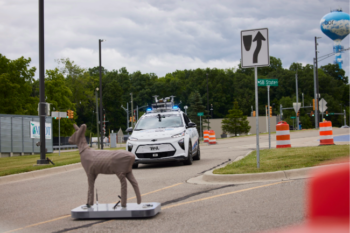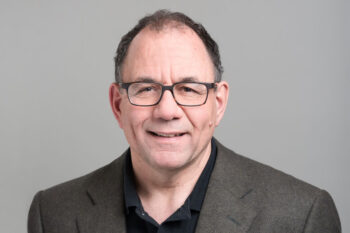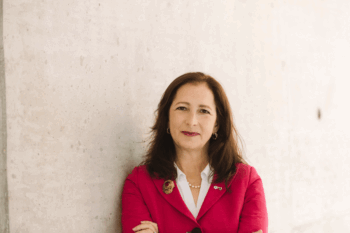Canadian Air & Space Museum Press Release
On April 13, 2010, the Canadian Air & Space Museum celebrated the 40th Anniversary of the Apollo 13 mission by recognizing the little known role that the University of Toronto Institute for Aerospace Studies (UTIAS) played in the safe return of the astronauts. Forty years ago, following an explosion that rocked the Apollo 13 space craft, Grumman Aerospace officials called UTIAS for help.
On the historic anniversary, the Canadian Air & Space Museum, along with the Canadian Space Society, also recognized the team of health professionals that recently supported Canadian Astronaut Dr. Robert (Bob) Thirsk during his 188-day mission aboard the International Space Station (ISS) in 2009.
Responding to a phone call 40 years ago Forty years ago, an explosion in space had badly damaged the command and service module of Apollo 13, crippling the spacecraft and prompting the astronauts to move to the lunar module, which had to function as a life raft for the return journey. In Toronto, a routine staff meeting at UTIAS was interrupted by a phone call from Grumman Aerospace Corporation, which had been contracted to build the Apollo lunar modules, wanting help.
UTIAS had been contacted to help with a crucial calculation on the correct pressure required to separate the entry module from the damaged spacecraft, because the two could not be separated using the mission profile. It was decided to use some residual air pressure to free the entry module from the spacecraft, but the key question was how much pressure should be used: too little pressure and the space vehicles wouldn’t have a clear separation; too much pressure could have resulted in damage to the entry hatch on the lunar module.
A small team at UTIAS was assembled to tackle the challenge, made up of professors Phil Sullivan, Rod Tennyson, Irvine Glass, Barry French and Ben Etkin. The team stayed in touch by phone and sorted out the issues and made a recommendation.
“We’re thrilled to be presenting UTIAS with a Canadian Air & Space Pioneer award,” says Claude Sherwood, CEO, Canadian Air and Space Museum. “They were involved in a key decision that was part of the safe return of the astronauts. It’s just one example of the tremendous work that UTIAS does on a daily basis, which ranges from aerospace dynamics and microsatellite technology.”
Three of the original UTIAS team involved in the Apollo work – Phil Sullivan, Barry French and Ben Etkin – were on hand to accept the award on behalf of UTIAS, along with UTIAS director, David Zingg.
In honour of the day, NASA astronaut Fred Haise, pilot of the Lunar Module on Apollo 13, sent a letter of appreciation to the UTIAS team, which was read by Museum Space Curator Robert Godwin at the press conference.
“Let me join others in congratulations to the University of Toronto Institute for Aerospace Studies as the recipient of this year’s Air & Space Pioneer Award,” wrote Haise. “As the Lunar Module Pilot on Apollo 13, I would certainly vouch for their credentials. Their study and calculations provided a safe means to utilize pressure in the tunnel area between the Command & Service Module (CSM) and the Lunar Module (LM) to assure safe separation of the LM without damaging the hatch. This was another one of the new procedures that had to be implemented on Apollo 13 to assure our safe return. My sincere thanks and congratulations again on your well deserved award!”
The Museum also looked forward 40 years to recognize the efforts of the support team that helped Canadian Space Agency astronaut Robert Thirsk while he was in the International Space Station in 2009.
Dr. Thirsk became the first Canadian astronaut to fly a long duration expedition aboard the International Space Station. Behind the scenes, a team of Canadians and American health and safety professionals contributed not only to the safe return of Bob Thirsk to Earth, but also to his mission readiness, and post-mission health.
As a member of the ISS Expedition 20/21 crew, Bob and his five international crewmates performed an unprecedented amount of multidisciplinary research, complex robotic operations, and maintenance and repair work of Station systems and payloads. The expedition team members include:
- Dr. Doug Hamilton, Flight Surgeon
- Dr. Marvin Lange. Psychiatrist
- Dr. Gary Gray, Senior Consultant Flight Surgeon
- Ms. Leena Tomi, Project Manager
- Ms. Natalie Hirsch, Project manager
- Mr. Chris Van Velson, Biomedical Engineer
“We are honoured to recognize the health support personnel of the ISS Expedition 20/21 mission with a pioneer award, further demonstrating that even after 40 years, Canadian expertise is still at the forefront of ensuring the safe return of humans from space,” says Kevin Shortt, president of the Canadian Space Society, who made the announcement at today’s event.
The Award to the Health & Safety team supporting Dr. Thirsk’s mission aboard the International Space Station will be presented to representatives at the Canadian Space Society Annual Summit in Ottawa on November 19-21, 2010.
The Canadian Air & Space Pioneer Award recognizes individuals and institutions that have advanced Canadian achievements in aviation and space. It was launched by the Museum in July 2009 on the 40th anniversary of the moon landing. The three 2009 laureates – James Floyd, John Hodge, and Owen Maynard – were engineers associated with the Avro Arrow program. Floyd continued his career working on advanced aircraft and Hodge and Maynard played leading roles in the NASA space program.



